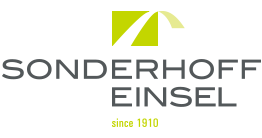Newsletter (November 2018) │ IP Practice
Ⅰ. Facts of the case
Appellee/Plaintiff Medion Research Laboratories Inc., who owns two patent rights concerning an invention entitled “Carbon Dioxide-Containing Viscous Composition”.
Appellant/Defendant NeoChemir Inc. ,COSMEPRO CO.,Ltd ,AIRICA Co.,Ltd ,CHIARA MACCHIATO Co.,Ltd ,WINGSENSE CO.,Ltd ,Cosmebose Inc. ,CLEAR NOIR Co.,Ltd produced and sold carbonate pack cosmetic, which allegedly fall within the technical scope of the Appellee’s invention.
Ⅱ. Procedural History
Appellee/Plaintiff sought injunction of the production and sales of the defendant’s products, disposal of said products and claimed compensation for damage on the ground of tortious acts of patent rights infringement according to Article 100 (1)(2), 102 (2) Patent Act in the Osaka District Court (Case Number:2015(Wa)4292). The Osaka District Court decided in favor of the plaintiff to which the Defendant appealed.
III. Issues
The IP High Court had to decide on three major issues, which are the following:
– Which expenses should be considered in the calculation of damages?
– What circumstances must be considered in the rebuttal to presumption of Article 102 (2) Patent Act according to the damages incurred by the Appellee to the profits gained by the Appellant?
– What is a reasonable royalty rate in an infringement case and what circumstances must be considered?
Ⅳ. Holding
The court held, that only those expenses which are directly related with the manufacture and sale of infringing products, e.g. R&D costs, promotion and advertising costs, are deductible. The court held, that the following circumstances must be considered:
[i] a difference between patentee’s business and infringer’s business (non-identity of the market);
[ii] the presence of competing products in the market;
[iii] marketing efforts of infringer (branding, advertisement); and
[iv] performance of infringing products (features other than patent invention including function and design).
Lastly the court held, that a reasonable royalty rate in an infringement case in the pharmaceutical industry would not fall below 10% as long as industry standards, the importance of the patent and the competitive of the parties is considered.
Ⅴ. Reasoning
- Amount of profit earned by an infringer due to an infringing act as provided in Article 102, paragraph (2) of the Patent Act
In the case where the patentee is faced with difficulties proving the amount of damages caused by the infringement, the profit made by the infringer should be deemed the amount of damages. Although the amount of profit made by the infringer should be construed as a marginal profit in which only additional costs directly related to the manufacture and sales of the infringing product may be deductible. In this case a part of experiment and research costs, promotion and advertising costs were deductible.
- Ground for rebuttal to presumption under Article 102, paragraph (2) of the Patent Act
It is construed that an infringer should bear the burden of proving circumstances which rebut the presumption under Article 102 paragraph (2) of the Patent Act by hindering a legally sufficient cause between the infringer’s profit and the patentee’s damages. However, mere fact that the patent invention is implemented for only a part of the infringing products doesn’t directly lead to the rebuttal of the presumption Further, should there be circumstances where an infringing product causes effects superior to the products of patentee or an infringing product is an implemented product of the other patent invention, it would not directly lead to the rebuttal to presumption.
- Amount to be paid under the provision of Article 102, paragraph (3) of the Patent Act
The main principle in calculating damages under the provision of this paragraph should be on a sales figure basis of infringing products by multiplying the sales figure by a royalty rate to be paid for the implementation. In determining the reasonable royalty rate for an infringement case it must be considered that the infringer could operate without any contractual restrictions and would therefore benefit from an industry standard royalty rate.
Therefore, in an infringement lawsuit, a royalty rate to be paid for the implementation should be determined as reasonable by comprehensively taking into account the following circumstances appearing in a lawsuit:
[i] A royalty rate set in the actual license agreement for the patent, or if it is indefinite, an average royalty rate in the industry;
[ii] The value of the patent; i.e., the technical content or significance of the patent invention, and the substitutability with alternative technology;
[iii] Contributions of the patent to sales and profits and a manner of infringement; and
[iv] a competitive relationship between patentee and infringer as well as a business policy of the patentee.
Therefore it is reasonable to conclude that a royalty rate would not fall below 10% by taking into account the above mentioned circumstances.

